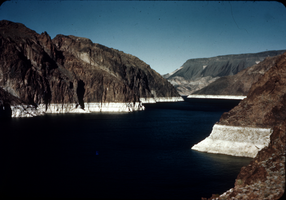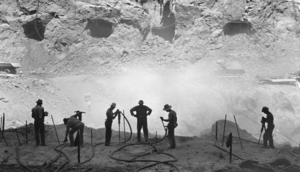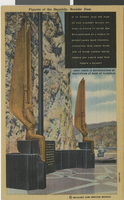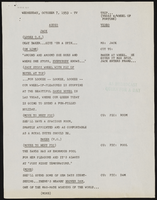Search the Special Collections and Archives Portal
Search Results
Stratosphere Tower concrete pour: video, 1992 February 22
Level of Description
Scope and Contents
Las Vegas, Nevada newscasts describing the foundation at the Stratosphere Tower marking the largest continuous concrete pour since Hoover Dam. Original media VHS, color, aspect ratio 4 x 3, frame size 720 x 486.
Archival Collection
Collection Name: Bob Stupak Professional Papers
Box/Folder: Digital File 00, Box 36
Archival Component
Albert Risley oral history interview
Identifier
Abstract
Oral history interview with Albert Risley conducted by his granddaughter, Wendy Dalmas, on February 27, 1979 for the Ralph Roske Oral History Project on Early Las Vegas. In this interview, Risley discusses the development of Boulder City, Nevada after his transfer there from Denver, Colorado in 1944. Risley discusses creating a point-based system which was used to assign housing to government employees based on their status and needs. Risley describes life in Boulder City during World War II, and the nearby U.S. Army camp, Camp Williston, which was established to protect Boulder (Hoover) Dam during the war. Risley also describes observing nuclear weapons tests and his later career as a Contracting Officer and Procurement Officer for the Lower Colorado Region after being promoted in 1971.
Archival Collection
Carrie Christensen and Orien Stevens oral history interview
Identifier
Abstract
Oral history interview with Carrie Christensen and Orien “Buster” Stevens conducted by Bernard Timberg on February 04, 1974 for the Ralph Roske Oral History Project on Early Las Vegas. In this interview, Christensen and Stevens discuss segregation in Boulder City, Nevada, their interactions with Native Americans, and the Westside community in Las Vegas, Nevada. They also talk about the Union Pacific Railroad, the influx of migrants and growth of churches during World War II. Stevens describes his experience working on Hoover Dam (Boulder Dam) as well as the railroad starting at age fifteen. Christensen discusses her personal life, her religious opinions, and mottos.
Archival Collection

Slide of Lake Mead, circa late 1930s
Date
Archival Collection
Description
Image

Film transparency of workers drilling on the canyon floor, Hoover Damn, circa 1930-1935
Date
Archival Collection
Description
Image

Photograph looking down on the Colorado River, 1932-1936
Date
Archival Collection
Description
Image
Nanyu Tomiyasu oral history interview
Identifier
Abstract
Oral history interview with Nanyu Tomiyasu conducted by Mark French on April 12, 1977 for the Ralph Roske Oral History Project on Early Las Vegas. Tomiyasu begins by discussing his father's immigration from Japan to North America in 1898, and his move to Las Vegas, Nevada in 1916. He talks about his father's work in agriculture and the types of crops grown in Las Vegas during the early twentieth century. Tomiyasu also discusses his own upbringing in Las Vegas, how the city has changed and grown, and his education. Tomiyasu describes the Native Americans of Southern Nevada, the environmental changes caused by the construction of the Hoover Dam (Boulder Dam), and his experiences as a Japanese American in Las Vegas.
Archival Collection
Wayne Cronister Photograph Collection
Identifier
Abstract
The Wayne Cronister Photograph Collection depicts towns in Southern Nevada from 1905 to 1950. The photographs primarily depict Fremont Street in Las Vegas, Nevada and the construction of the Hoover (Boulder) Dam on the Colorado River. The photographs also include the Union Pacific Railroad Depot in Las Vegas, Nevada, the abandoned town of Rhyolite, Nevada, and a mining camp in El Dorado Canyon.
Archival Collection

Figures of the Republic, Boulder Dam: postcard
Date
Archival Collection
Description
Mixed Content

